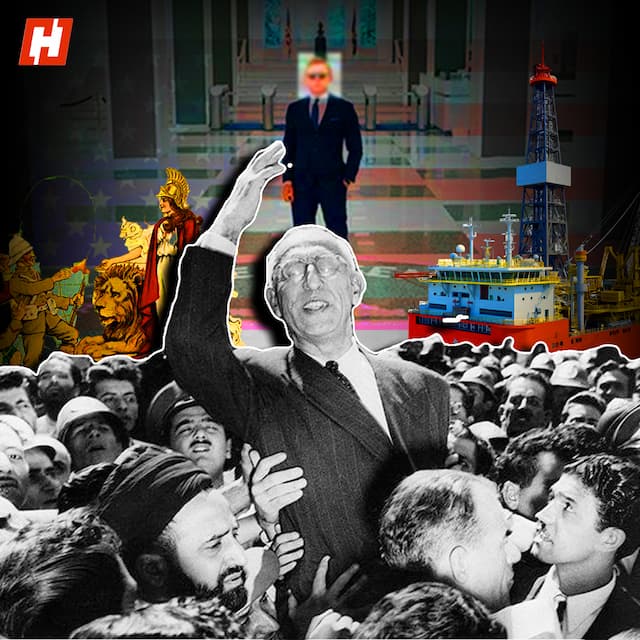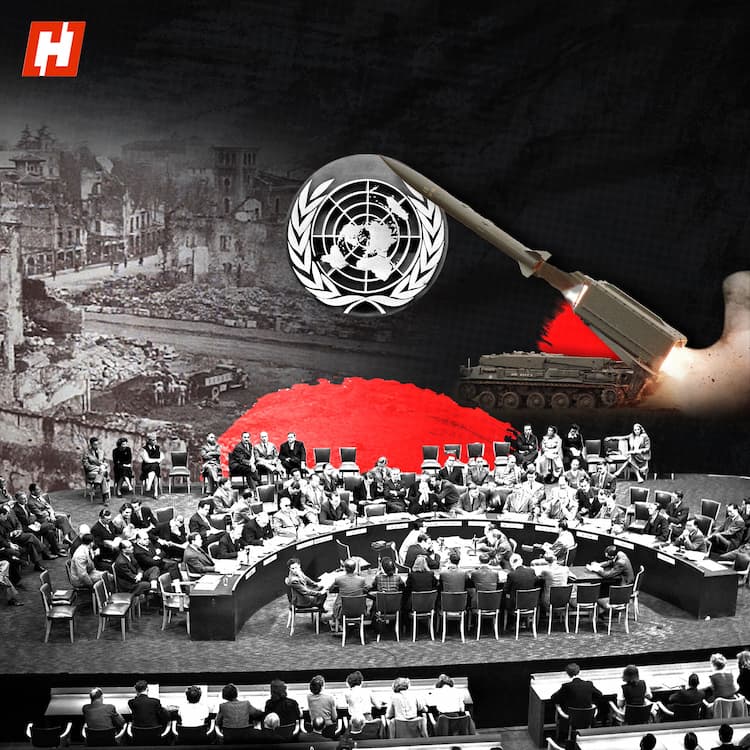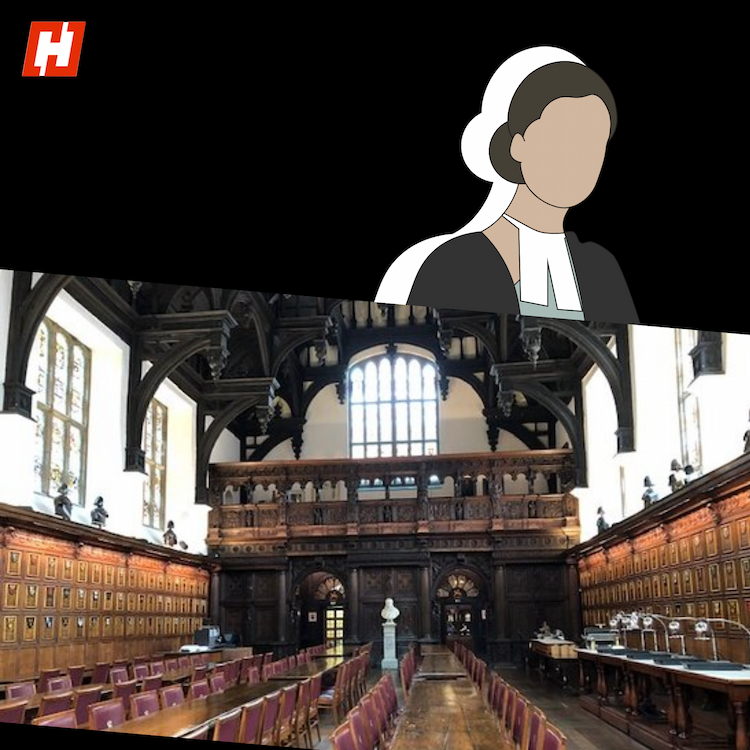Not the nuclear standoff, Iran-US conflict dates back to a CIA-led coup in 1953

August 19, or 28 Mordad as it’s known in Iran, is the anniversary of the 1953 CIA-backed coup d'état in Iran. It was the first coup orchestrated by America’s Central Intelligence Agency. The event laid the groundwork for the current US-Iran rivalry, and the distrust between the two nations.
72 years ago, Iran had a popular, reformist, secular, Western-educated Prime Minister; Dr. Mohammad Mosaddegh. The CIA orchestrated his downfall; knocking over the first domino, which would lead us to the chaos we see today. This is a story about a fledgling democracy trying to take flight, and how it was struck down by Autocrats, Imperialists and Big Oil.
Who was Mohammad Mosaddegh?
Mohammad Mosaddegh was born in 1882. He came from nobility. His mother was a princess. A direct descendant of Fath-Ali Shah Qajar, the second Qajar Shah of Iran. Mosaddegh’s father was also an aristocrat. He was a minister in the royal court. This was during the Qajar era, not under the Pahlavi Shahs.
Between 1911 and 1913, Mosaddegh was in Switzerland. At the University of Neuchâtel. Mosaddegh received a PhD in law from the university, making him the first Iranian to earn that distinction. Mosaddegh then returned to Iran, and eventually entered politics. Mosaddegh was elected to the Iranian parliament, or Majlis, on multiple occasions. Finally, in 1951, the Majlis chose to make Mohammad Mosaddegh the 30th Prime Minister of Iran. He was confirmed by the Shah on April 28 that year.
The Iran of 1951 wasn’t the same as the Iran of Mosaddegh's childhood. For one thing, there was a new royal dynasty in charge. The Pahlavis. In 1921, a military officer called Reza Khan took power in a coup. He made himself Minister of War, and then Prime Minister. Finally, four years later in 1925, he ousted the last Qajar monarch, and seized the throne for himself. Reza Khan changed his name to Reza Shah Pahlavi, founding what would be the last royal dynasty of Iran.
So, in 1951, it wasn’t Mosaddegh’s royal relatives appointing him Prime Minister. It was Mohammad Reza Pahlavi; the son of the man who ended Qajar rule in Persia. Before Reza Shah, the country was known to the outside world as Persia. But the Pahlavi monarch insisted that foreigners use the indigenous name of the country; Iran. Mosaddegh became the Prime Minister of a country with a new name and a new ruling family. But it was a country which still had a host of very old problems. Problems caused by the British.
How the British Empire Manipulated Iran
For decades, Britain had been manipulating Iran from behind the scenes. It had extracted numerous, exploitative concessions from the Iranian Shahs. It had monopolised entire industries in Iran, funnelling wealth away from the country to fill the coffers in London.
Britain is even said to have backed Reza Shah’s coup against the Qajars. Later, in 1941, they joined the Soviets to invade and occupy Iran, forcing Reza Shah to abdicate and hand power over to his son, Mohammad Reza Pahlavi. So, by 1951, most Iranians considered Britain an enemy. The shadowy foreign hand that was ruining their lives. And that hand had a tight grasp on one very important thing. Iran’s oil industry.
Anglo-Iranian Oil Company
Oil was discovered in Iran on May 26, 1908, and the British had secured exclusive rights to extract it. A company was created to handle the extraction; The Anglo-Persian Oil Company. In 1935, it changed its name to the Anglo-Iranian Oil Company. And in 1954, it would become The British Petroleum Company; the precursor to BP.
When the British secured exclusive rights to extract Iranian oil, they came up with a revenue sharing agreement. 16% of the profits from oil sales would go to Iran. 16% already sounds unfair, but the operative word is profits. Anglo-Iranian was accused of showing reduced profits to deny Iran its fair share of royalties.
The company would use oil revenue to build refineries and oil infrastructure all over the world. These foreign projects would then be spun off into subsidiary companies. Profits from those subsidiaries would not be shared with Iran. Even though its oil revenue was used to set them up. The Anglo-Iranian Oil Company was majority-owned by the British government. They bought a controlling stake in 1914, to secure oil supplies during World War 1. Britain used its control to supply oil to its Navy at a subsidised rate. This reduced the company’s profits, and lowered Iran’s share of royalties. The British government also taxed Anglo-Iranian heavily. It targeted the company’s profits. So the Anglo-Iranian Oil Company ended up paying more taxes to London, than royalties to Tehran.
The people of Iran considered Anglo-Iranian's practices unfair. The Iranians believed that they were the ones who should have been profiting from their own natural resources. There was immense public pressure to right this wrong. The Iranian parliament sought to audit Anglo-Iranian's books. To see if it was paying Iran what was due. The parliament also wanted to limit Anglo-Iranian's control over the country’s vast oil reserves. Leading these efforts was a very popular member of parliament. The MP from Tehran, Mohammad Mosaddegh.
Anglo-Iranian wasn’t going to give up without a fight thought. The company didn’t comply with the Iranian parliament’s wishes, sparking unrest and widespread protests. Iran’s Prime Minister in early 1951, Haj Ali Razmara, was working on a deal with Anglo-Iranian. But he was assassinated by a member of a radical group for his conciliatory approach. The assassination was the last straw for the Iranian parliament. They voted to nationalise Anglo-Iranian. They also put Mohammad Mosaddegh forward as the new Prime Minister. Mosaddegh became PM on April 28, 1951, and he set about the task of nationalising Anglo-Iranian.
Mossadegh's Nationalisation of Iran's Oil
The British Empire tried everything to slow him down. Including taking Iran to the International Court of Justice. Iran didn’t send an official delegation to the ICJ. Mosaddegh said that the court didn’t have any jurisdiction over the case. He said the nationalisation issue was between Iran and a company, Anglo-Iranian. It wasn’t Iran versus Britain. A year later, in July 1952, the ICJ would go on to agree with Iran.
But the British Empire had already had enough. It began punishing all of Iran for daring to support Mosaddegh. The first step was an embargo. Britain didn’t allow Iran to sell its oil in the global market. Potential importers were threatened with consequences. And British ships lined the Persian Gulf to enforce the blockade. The British Empire also imposed sanctions. It stopped exporting steel and sugar to Iran. Iranian assets in British banks were frozen, depriving the country of access to its own money. All these economic measures were hurting ordinary Iranians. In turn this was hurting public support for Mosaddegh. But the beginning of the end came when the Americans turned on the Iranian Prime Minister.
US Involvement in Iran
When Mosaddegh came to power, World War 2 ended. The Germans and the Japanese were defeated, and the US had a new enemy. Communism. The Cold War had begun in 1947. That’s also the year the CIA was founded. In 1949, the Soviet Union successfully tested its first nuclear bomb. Moscow’s sphere of influence was expanding. Anti-Communist sentiment was all the rage in America.
It’s this America that Mosaddegh sought help from. He hoped that the US would push Britain into treating Iran fairly. Mosaddegh’s outreach to the Americans irked Iran’s Communists, the Tudeh party. They called Mosaddegh an agent of American imperialism. As they say, an enemy’s enemy is a friend. The US knew that Mosaddegh was widely popular. So, it figured that the Prime Minister was an effective bulwark against Communism in Iran.
While the Americans didn’t support Mosaddegh outright, they did try to negotiate a compromise between Britain and Iran. But over time, the US position changed. Mosaddegh’s popularity started waning. The British embargo was taking its toll. And Mosaddegh’s policies started alienating his erstwhile allies. By early 1953, the Americans believed that it was only a matter of time until Mosaddegh fell and the Communists took over.
So, they decided to act first. The US saw only one alternative to Mosaddegh. A force that could potentially unite the Iranian people, and keep the Communists at bay. Mohammad Reza Pahlavi. The Shah.
CIA Operation Ajax
The US hatched a plot to oust Mosaddegh, and give more power to the Shah of Iran. They named the scheme Operation Ajax. The CIA was in charge of Operation Ajax. The US declassified files related to the scheme in 2017, publicly acknowledging its role in Mosaddegh’s ouster.
In 1953, the CIA wanted the Shah to fire Mosaddegh and replace him with a Prime Minister who would crack down on the Communists in Iran. The Shah had no love for Mosaddegh. In fact, there was a power struggle between the two. Mosaddegh believed that real power should rest with parliament. He wanted the Shah to be reduced to a ceremonial figurehead. This didn’t go down well with Mohammad Reza Pahlavi. Add to that, Mosaddegh’s blood ties to the Qajars. So, for Mohammad Reza Pahlavi, Mosaddegh was enemy number one. But the Shah was terrified of crossing Mosaddegh.
The CIA worked to support the Shah and undermine Mosaddegh using various tactics, including propaganda. The Americans would draft anti-Mosaddegh and pro-Shah articles and send it to collaborators in the Iranian press. These articles would then be translated into Farsi, and published in Iran. The propaganda articles were among the documents that the CIA declassified.
The CIA also paid people to protest against Mosaddegh, and they funded thugs who would pretend to be Communists who supported Mosaddegh. In 2017, the US partially declassified documents showing that the CIA spent over $5 million dollars orchestrating Mosaddegh’s ouster.
How the CIA Overthrew Mosaddegh
In August 1953, Mohammad Reza Pahlavi signed a firman, or royal decree, dismissing Mosaddegh. Even after signing the decree, the Shah was still afraid of Mosaddegh’s popularity, so he left Tehran. It was a smart move, because the coup almost failed.
Mosaddegh was tipped off about the coup. On August 15, Mosaddegh had Nematollah Nassiri, the military official tasked with delivering the firman, arrested. A hunt was launched for the coup plotters. The Shah even fled the country, going to Iraq and then Italy. Mosaddegh thought he had successfully prevent4ed the coup, but the CIA didn't give up.
Kermit Roosevelt Jr. was the American intelligence officer in charge. He was grandson of former US President Theodore Roosevelt. He continued to coordinate with the Shah’s supporters in the military were still active, who were led by his US-backed choice for Prime Minister, General Fazlollah Zahedi. Over the next few days Zahedi mobilised the army, and then on August 19, they stormed Tehran. Government buildings were seized, the Tehran Radio station was captured, and a tank was used to attack Mosaddegh’s house. The Prime Minister was forced to flee, and later that day, he surrendered to the Iranian army. The coup succeeded.
Aftermath of the 1953 Iran Coup
The rest, as they say, is history. Mohammad Reza Pahlavi returned to Iran. He was personally escorted by the Director of CIA, Allen Dulles. The Iranian dream of oil nationalisation was dead. Britain got to keep its lucrative business, even though it had to share oil fields with the US. Iran’s oil fields were divided up between Anglo-Iranian and several American oil companies. So, the Autocrats, Imperialists and Big Oil all won. Well, in the short-run at least.
Mohammad Reza Pahlavi went on to become increasingly decadent and brutal. This bred widespread resentment among Iranians. Culminating in the 1979 Islamic Revolution. Iran’s theocratic government kicked the Shah’s American backers to the curb, leading to the hatred you still see today. And as for Iranian oil, well, the embargoes and sanctions are back. It’s up to you to decide the winners in all of this, but the victims are indisputable. The Iranians who longed for true democracy. And of course, Dr. Mohammad Mosaddegh.
After the coup, Mosaddegh was tried for treason. During the trial he was defiant till the end. He reportedly said, “I am blamed for many crimes, but I committed only one -- I refused to bow to the wishes of foreigners.” Mosaddegh was sentenced to three years’ solitary confinement in a military prison. After that, he spent the rest of his life under house arrest. He died on March 5, 1967.
Trending in Geopolitics

The only Indian ever executed by the Nazis — M. Madhavan

'New world order' that never was: 80 years since World War 2

Why advocates wear black and white

